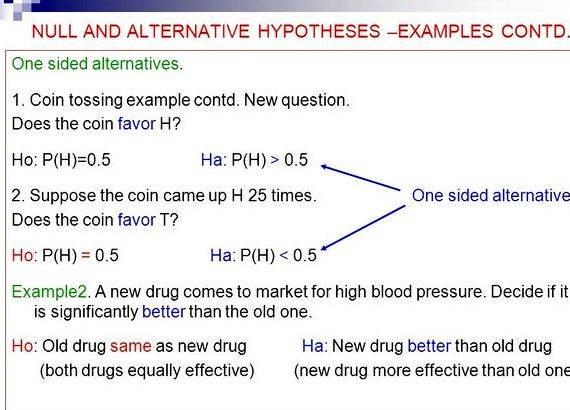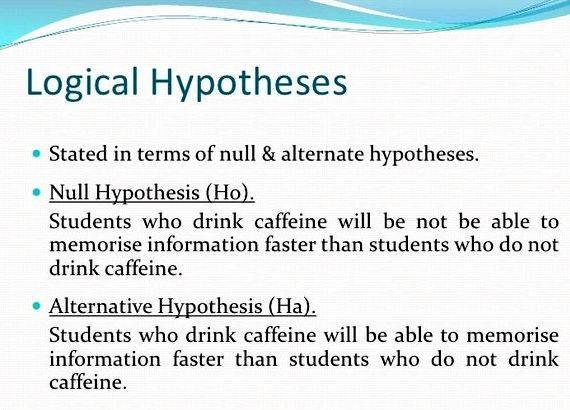General Questions to Answer for Each Problem
- Write the original claim symbolically.
- Identify whether the original claim is the null or alternative hypothesis.
- Write the null and alternative hypotheses.
- Identify the test as left tail, right tail, or two tail.
- Identify the level of significance, alpha.
- Find the critical value(s) from the normal table.
- Define success.
- Identify the sample size, n.
- Identify the number of successes, x.
- Find the sample proportion, p-hat.
- Find the test statistic, p-value, and confidence interval using Minitab.
- Reach a decision. Reject H0 if.
- The p-value is less than the significance level
- The test statistic falls in the critical region
- The confidence interval does not contain the claimed proportion
- Write a conclusion.
- There is enough evidence if your decision was to reject H0. otherwise, there is not enough evidence.
- You will reject the claim if the claim is the null hypothesis and support the claim if the claim is the alternative hypothesis.
Example Question – 1 Proportion
(The links aren’t necessary for understanding the material, but they’re there if you would like additional information or to see where I got the information from)
In the 2000-2001 school year, 6.0% of high school students in Illinois dropped out of school. For District 61 in Decatur, IL, there were 299 students out of 2647 that dropped out. Test the claim that the dropout rate for District 61 is higher than that of Illinois.
Write the original claim symbolically
The original claim is that the dropout rate for district 61 is higher than that of Illinois. Let p represent the dropout rate for district 61 and the dropout rate for Illinois is 6%. So, in English, the claim becomes that the proportion of dropouts is greater than 6%..
Written symbolically, this becomes p 0.06
Identify the original claim as the null or alternative hypothesis
Since the original claim does not contain the equal sign, it is the alternative hypothesis.
Write the null and alternative hypotheses
We’ve just decided that the original claim, p 0.06 is the alternative hypothesis, so that means the two hypotheses are:
Note that for the null hypothesis, you don’t need both. I like the ≤ the book likes the =, either is acceptable.
Identify the test as left tail, right tail, or two tail
Look at the alternative hypothesis for this. Since it is and points to the right, this is a right tail test.
Identify the significance level
Since one wasn’t given, we’ll use α = 0.05.
Find the critical values from the normal table
This isn’t something we’ll be doing on the test, but you should do it for your projects. This is a right tail test that has α=0.05 area in the tail. The normal table (Table Z) only has left tail areas in it, so if there is 0.05 area to the right, then there is 1-0.05=0.95 area to the left.
If you go to the normal table and lookup 0.9500 on the inside part of the table and then go to the outside to find the Z score, you’ll get 1.645. That’s the critical value.
The critical region is anything to the right (since this is a right tail test) of z = 1.645.
Define success
Since we’re interested in the percent of students who drop out, a success is a student who drops out of school.

Forget what you normally think about success and failure. We wouldn’t think a high school dropout is a success, but we have to define success and failure in terms of what we’re studying.
Identify the sample size, n
There are 2647 students in district 61
Identify the number of successes, x
Since a success is someone who dropped out, we have 299 successes
Find the sample proportion, p-hat
The sample proportion is the number of successes divided by the number of trials. 299 students out of 2647 dropped out, so the sample proportion is 299/2647 ≈ 0.112958.
Find the test statistic, p-value, and confidence interval using Minitab
This will be done for you on the test, but you’ll need to do them on your own when working on projects.
For this case, the test statistic is z = 11.47, the p-value is 0.000, and the confidence interval is p 0.102838.
Reach a decision
The test statistic z = 11.47 falls inside the critical region (everything greater than z = 1.645), so we reject the null hypothesis.
The p-value of 0.000 is less than the significance level of α = 0.05, so we reject the null hypothesis.
The claimed proportion of p = 0.06 does not fall in the confidence interval p 0.102838. Since the confidence interval contains the values we would believe, we won’t believe a claim of 6%, so we reject the null hypothesis.
Anyway you look at it, we reject the null hypothesis.
Write a conclusion
There IS enough evidence to SUPPORT the claim that the dropout rate for district 61 is higher than that of Illinois.
We use ENOUGH because we rejected the null hypothesis. We use SUPPORT because the claim that the rate is higher is the alternative hypothesis.
There IS enough evidence to REJECT the claim that the dropout rate for district 61 is the same as that of Illinois.
We use ENOUGH because we rejected the null hypothesis. We use REJECT because the claim that the rate is the same is the null hypothesis.
Two Proportions
The process is similar when you have two proportions instead of one. However in this case, we’ll be looking at the difference between the proportions rather than the proportion itself. So, when you look at a confidence interval, you’re trying to see if it contains the claimed value of 0 (no difference).
Last updated April 2, 2004 8:52 AM
General Questions to Answer for Each Problem
- Write the original claim symbolically.
- Identify whether the original claim is the null or alternative hypothesis.
- Write the null and alternative hypotheses.
- Identify the test as left tail, right tail, or two tail.
- Identify the level of significance, alpha.
- Find the critical value(s) from the normal table.
- Define success.
- Identify the sample size, n.
- Identify the number of successes, x.
- Find the sample proportion, p-hat.
- Find the test statistic, p-value, and confidence interval using Minitab.
- Reach a decision. Reject H0 if.
- The p-value is less than the significance level
- The test statistic falls in the critical region
- The confidence interval does not contain the claimed proportion
- Write a conclusion.
- There is enough evidence if your decision was to reject H0. otherwise, there is not enough evidence.
- You will reject the claim if the claim is the null hypothesis and support the claim if the claim is the alternative hypothesis.
Example Question – 1 Proportion
(The links aren’t necessary for understanding the material, but they’re there if you would like additional information or to see where I got the information from)
In the 2000-2001 school year, 6.0% of high school students in Illinois dropped out of school. For District 61 in Decatur, IL, there were 299 students out of 2647 that dropped out. Test the claim that the dropout rate for District 61 is higher than that of Illinois.
Write the original claim symbolically
The original claim is that the dropout rate for district 61 is higher than that of Illinois. Let p represent the dropout rate for district 61 and the dropout rate for Illinois is 6%. So, in English, the claim becomes that the proportion of dropouts is greater than 6%..
Written symbolically, this becomes p 0.06
Identify the original claim as the null or alternative hypothesis
Since the original claim does not contain the equal sign, it is the alternative hypothesis.
Write the null and alternative hypotheses
We’ve just decided that the original claim, p 0.06 is the alternative hypothesis, so that means the two hypotheses are:
Note that for the null hypothesis, you don’t need both. I like the ≤ the book likes the =, either is acceptable.
Identify the test as left tail, right tail, or two tail
Look at the alternative hypothesis for this. Since it is and points to the right, this is a right tail test.
Identify the significance level
Since one wasn’t given, we’ll use α = 0.05.
Find the critical values from the normal table
This isn’t something we’ll be doing on the test, but you should do it for your projects. This is a right tail test that has α=0.05 area in the tail. The normal table (Table Z) only has left tail areas in it, so if there is 0.05 area to the right, then there is 1-0.05=0.95 area to the left.
If you go to the normal table and lookup 0.9500 on the inside part of the table and then go to the outside to find the Z score, you’ll get 1.645. That’s the critical value.
The critical region is anything to the right (since this is a right tail test) of z = 1.645.
Define success
Since we’re interested in the percent of students who drop out, a success is a student who drops out of school.
Forget what you normally think about success and failure. We wouldn’t think a high school dropout is a success, but we have to define success and failure in terms of what we’re studying.
Identify the sample size, n
There are 2647 students in district 61
Identify the number of successes, x
Since a success is someone who dropped out, we have 299 successes
Find the sample proportion, p-hat
The sample proportion is the number of successes divided by the number of trials. 299 students out of 2647 dropped out, so the sample proportion is 299/2647 ≈ 0.112958.
Find the test statistic, p-value, and confidence interval using Minitab
This will be done for you on the test, but you’ll need to do them on your own when working on projects.
For this case, the test statistic is z = 11.47, the p-value is 0.000, and the confidence interval is p 0.102838.
Reach a decision
The test statistic z = 11.47 falls inside the critical region (everything greater than z = 1.645), so we reject the null hypothesis.
The p-value of 0.000 is less than the significance level of α = 0.05, so we reject the null hypothesis.
The claimed proportion of p = 0.06 does not fall in the confidence interval p 0.102838. Since the confidence interval contains the values we would believe, we won’t believe a claim of 6%, so we reject the null hypothesis.
Anyway you look at it, we reject the null hypothesis.
Write a conclusion
There IS enough evidence to SUPPORT the claim that the dropout rate for district 61 is higher than that of Illinois.
We use ENOUGH because we rejected the null hypothesis. We use SUPPORT because the claim that the rate is higher is the alternative hypothesis.
There IS enough evidence to REJECT the claim that the dropout rate for district 61 is the same as that of Illinois.
We use ENOUGH because we rejected the null hypothesis. We use REJECT because the claim that the rate is the same is the null hypothesis.
Two Proportions
The process is similar when you have two proportions instead of one. However in this case, we’ll be looking at the difference between the proportions rather than the proportion itself. So, when you look at a confidence interval, you’re trying to see if it contains the claimed value of 0 (no difference).
Last updated April 2, 2004 8:52 AM





 Writing a goodbye letter for my college son
Writing a goodbye letter for my college son Writing the image after roland barthes mythologies
Writing the image after roland barthes mythologies Usc literature and creative writing phd inmontereal
Usc literature and creative writing phd inmontereal My writing desk kaufen wohnung
My writing desk kaufen wohnung Rob parnell the writing academy
Rob parnell the writing academy






